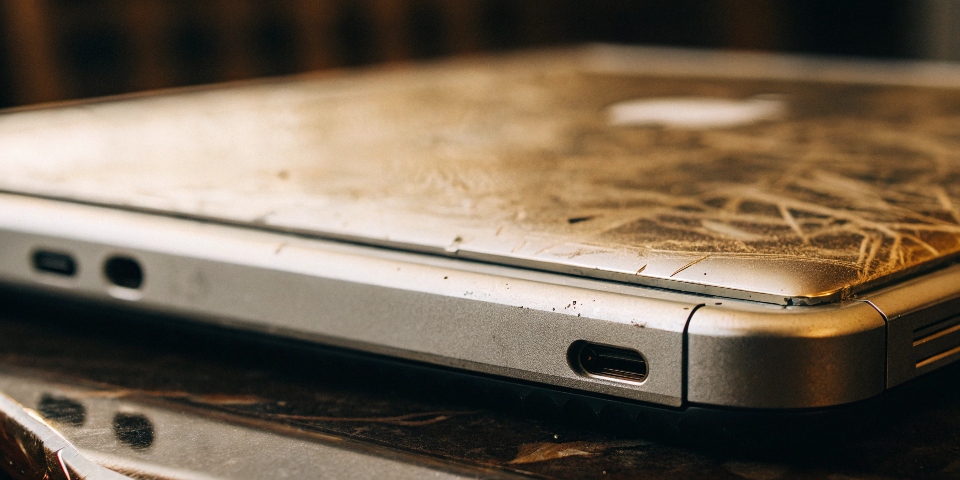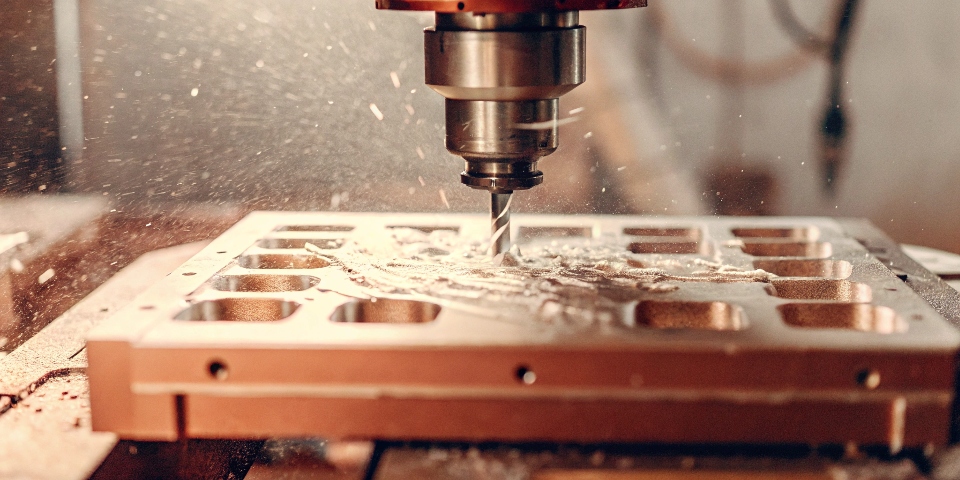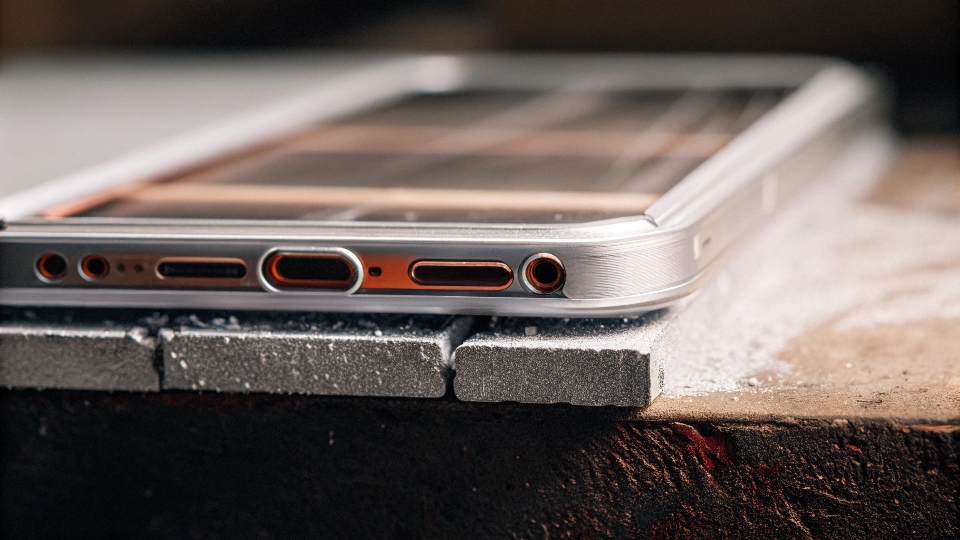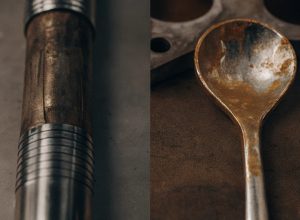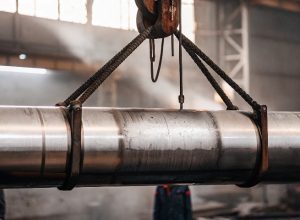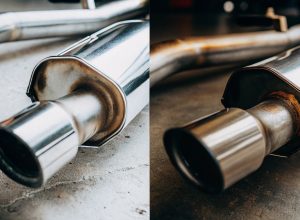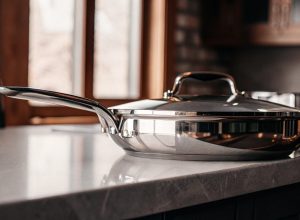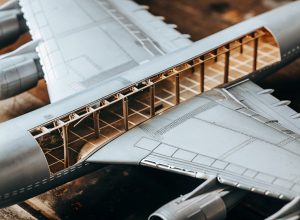¿Te preguntas por qué tu nuevo iPhone tiene un marco de titanio, pero tu MacBook1 ¿sigue siendo de aluminio? Esto no es un descuido. Apple hizo una elección de fabricación muy deliberada.
Apple dejó de utilizar titanio para los MacBooks debido principalmente a su elevado coste y a la extrema dificultad de mecanizarlo a gran escala. El aluminio ofrece un equilibrio mucho mejor entre resistencia, coste y facilidad de fabricación para la gran carcasa unibody de un portátil, lo que lo convierte en la opción más práctica para la producción en masa.
Parece sencillo: el titanio es demasiado caro. Pero hay algo más que el precio. Como consultor de la cadena de suministro de titanio, veo a las empresas tomar este tipo de decisiones todo el tiempo. Tienen que sopesar el atractivo del marketing con la dura realidad de la fabricación. Analicemos los retos específicos a los que se enfrentó Apple y por qué el aluminio ganó finalmente la batalla por el MacBook.
¿Cuáles eran las desventajas del portátil Titanium original?
¿Recuerdas el PowerBook G4? Era una máquina icónica, pero ¿era realmente perfecta su carcasa de titanio? Muchos usuarios e ingenieros descubrieron que utilizar este avanzado metal para un dispositivo de consumo tenía algunos inconvenientes sorprendentes.
Los PowerBooks de titanio originales eran propensos a los arañazos y la pintura se descascarillaba a menudo, dejando al descubierto el metal en bruto. Y lo que era más grave para Apple, el material era increíblemente difícil de moldear y mecanizar, lo que provocaba un alto índice de fallos en la cadena de producción y elevaba considerablemente los costes de fabricación.
Profundizar en los obstáculos a la fabricación
Recuerdo el entusiasmo que suscitó el "TiBook". Para los que trabajamos en la industria metalúrgica, era un paso muy audaz. Pero las historias que se contaban en las fábricas eran muy distintas. El titanio tiene una propiedad llamada baja conductividad térmica, lo que significa que el calor se acumula en la herramienta de corte durante el mecanizado. También tiende a agrietarse, lo que significa que puede pegarse a la herramienta. Estos problemas hacen que el proceso de mecanizado sea lento, difícil y caro. A menudo aconsejo a mis clientes, como Ahmed, que dirige una empresa de distribución de metales en Turquía, que aunque el titanio es excepcionalmente fuerte, su fabricación requiere equipos especiales y una gran experiencia. Crear piezas pequeñas y sencillas es una cosa. Mecanizar una compleja y delgada carcasa unibody para un portátil es un reto completamente distinto. Es probable que Apple tuviera que hacer frente a tasas de desecho muy elevadas, en las que un pequeño fallo significaba descartar una carcasa de titanio cara y casi acabada. Esto simplemente no era sostenible ni rentable para un dispositivo que se vende a millones de personas, lo que les empujó a utilizar las aleaciones de aluminio más fiables y tolerantes que vemos hoy en día.
¿Es mejor el aluminio para la carcasa de un portátil?
A menudo pensamos en el titanio como el metal por excelencia, pero ¿es siempre la mejor opción para todos los productos? Para un dispositivo como un MacBook, que debe ser duradero, ligero y producible a gran escala, el aluminio tiene varias ventajas clave.
Para el cuerpo de un portátil, el aluminio ofrece un excelente equilibrio entre resistencia, bajo peso y excelente maquinabilidad. Es mucho más barato y fácil de fresar en los grandes y precisos diseños unibody por los que Apple es famosa. También disipa el calor mejor que el titanio, una característica crítica para los ordenadores potentes.
Profundizar en las propiedades de los materiales
Cuando un cliente me pide que compare materiales, siempre empiezo por estudiar la aplicación específica. Para un ordenador portátil, se necesita mucho más que resistencia bruta. Comparemos los dos materiales para este caso de uso concreto.
| Característica | Titanio (por ejemplo, grado 5) | Aluminio (por ejemplo, Serie 6000) |
|---|---|---|
| Fuerza-peso | Muy alta | Bien |
| Maquinabilidad | Difícil | Excelente |
| Coste | Alta | Bajo |
| Disipación del calor | Pobre | Excelente |
| Resistencia a la corrosión | Excelente | Bueno (con anodizado) |
Como muestra la tabla, el titanio gana claramente en fuerza pura y resistencia a la corrosión. Siempre ayudo a mis clientes a elegirlo para piezas ligeras y ultraduraderas en ingeniería aeroespacial y naval. Pero para un MacBook, los demás factores son mucho más importantes. La excelente maquinabilidad del aluminio permite a Apple crear su característico chasis unibody con rapidez y precisión. Su capacidad para eliminar el calor también es una gran ventaja para un dispositivo con procesadores de alto rendimiento. Por último, la enorme diferencia de coste cierra el trato. El aluminio tiene más sentido comercial para un producto que se fabrica por millones.
Si el titanio es tan difícil, ¿por qué usarlo en el iPhone 15 Pro?
Esta es la parte que confunde a mucha gente. Apple dice no al titanio para un producto estrella, pero sí para otro. Parece una contradicción, pero la respuesta tiene que ver con el tamaño y la función del componente.
Apple utiliza un Titanio de grado 52 para el marco exterior del teléfono, no para todo el cuerpo. Esta parte más pequeña se fusiona a una subestructura de aluminio. Este método aprovecha la resistencia y el tacto de primera calidad del titanio, al tiempo que reduce al mínimo el difícil y costoso mecanizado.
¿Busca barras de titanio fiables?
Nuestras barras de titanio están disponibles en varios grados y especificaciones para cumplir las normas industriales más exigentes. Perfectas para aplicaciones aeroespaciales, médicas e industriales, garantizan calidad y rendimiento en las condiciones más duras.

Profundizar en el diseño inteligente
A menudo aconsejo a mis clientes que utilicen el titanio de forma estratégica. No siempre es necesario fabricar todo el producto con él para obtener beneficios. El método de Apple con el iPhone 15 Pro es un caso perfecto. No están intentando mecanizar una carcasa grande y plana como la que requiere un MacBook. En su lugar, están creando una banda estructural. Esta banda, fabricada con titanio de grado 5 -la misma aleación que utilizamos para componentes aeroespaciales críticos-, proporciona una resistencia increíble y un notable ahorro de peso con respecto a los anteriores marcos de acero inoxidable. Esta banda de titanio se une a un marco interno de aluminio, que es mucho más fácil de fabricar y ayuda a gestionar el calor. Este inteligente diseño híbrido les da la victoria comercial del "titanio" y sus ventajas reales (resistencia, ligereza) sin el enorme coste y los problemas de fabricación de un cuerpo completo de titanio. Es un ejemplo de libro de texto sobre el uso del material adecuado para el trabajo adecuado, que es el principio básico de abastecimiento inteligente y gestión de la cadena de suministro.
Conclusión
En resumen, Apple elige el aluminio para los MacBook porque equilibra a la perfección el coste, el rendimiento y la facilidad de fabricación para un producto de gran tamaño, ahorrando el titanio de primera calidad y difícil de trabajar para componentes más pequeños y de alto impacto.

[^2) de titanio junto a un moderno MacBook de aluminio](https://titonestmetal.com/wp-content/uploads/2025/08/apple-stopped-using-titanium-for-macbooks-primar.jpg)
